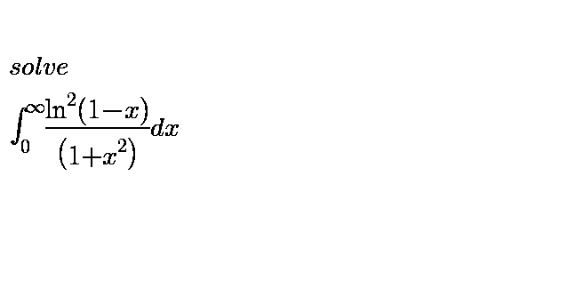
AllQuestion and Answers: Page 1092
Question Number 109214 Answers: 1 Comments: 0
Question Number 109213 Answers: 0 Comments: 0
Question Number 109212 Answers: 0 Comments: 0
Question Number 109208 Answers: 1 Comments: 0
Question Number 109207 Answers: 2 Comments: 0
Question Number 109201 Answers: 1 Comments: 1

Question Number 109193 Answers: 3 Comments: 8
$${solve}\: \\ $$$${x}^{{x}^{\mathrm{3}} } =\mathrm{5} \\ $$
Question Number 109191 Answers: 1 Comments: 1
Question Number 109190 Answers: 0 Comments: 0

Question Number 109178 Answers: 2 Comments: 1

Question Number 109174 Answers: 1 Comments: 0

Question Number 109169 Answers: 1 Comments: 0
Question Number 109167 Answers: 1 Comments: 0

Question Number 109160 Answers: 4 Comments: 0
Question Number 109149 Answers: 0 Comments: 2
Question Number 109147 Answers: 3 Comments: 0
Question Number 109145 Answers: 0 Comments: 0

Question Number 109144 Answers: 0 Comments: 0

Question Number 109143 Answers: 0 Comments: 0

Question Number 109142 Answers: 0 Comments: 1

Question Number 109141 Answers: 2 Comments: 0

Question Number 109139 Answers: 0 Comments: 1
Question Number 109136 Answers: 1 Comments: 0
Question Number 109237 Answers: 4 Comments: 0
Question Number 109129 Answers: 1 Comments: 0
Question Number 109128 Answers: 0 Comments: 1
Pg 1087 Pg 1088 Pg 1089 Pg 1090 Pg 1091 Pg 1092 Pg 1093 Pg 1094 Pg 1095 Pg 1096
